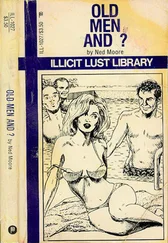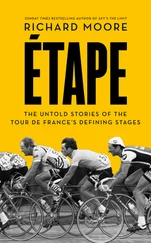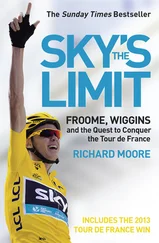In talking to Brailsford, however, there is one subject that looms ominously and lurks malevolently in the shadows. This being cycling, there has been a gathering cloud of suspicion, rumour and innuendo, whispered in the past, but inevitably set to be more explicitly stated the more successful they become. In the Italian camp there have been accusations that the secret to the British team’s success must be doping – organized, systematic doping.
When asked about this, Brailsford doesn’t sigh in exasperation. He doesn’t fix you with a withering stare. He doesn’t point out that it is impossible to prove a negative. In short, he doesn’t dodge the subject. And what he says, though it may look almost naive, contains an irresistible logic. ‘We create an environment in which athletes don’t want to dope,’ he says. Ah. Okay, then. But how? ‘Come and have a look at what we do,’ shrugs Brailsford. ‘We have nothing to hide. We look at aspects of performance that have nothing to do with doping. But anyone who wants to check us out can come and have a look at our anti-doping programme and draw their own conclusions.’
But if it isn’t a highly sophisticated and organized doping programme, then what is the secret? Is there one? Still hanging around the track centre is Boardman, whose remit, as director of coaching, includes ‘research and development’. The man who was once famous for winning the Olympics on a machine christened ‘Superbike’ is now – appropriately enough – charged with sourcing and developing the latest, most cutting edge equipment, from clothing to bikes. Boardman is leaning over one of the barriers that segregate the teams, in their ‘pens’, when I approach him. He looks furtive. Nothing to hide, eh? Yeah, right – not according to Boardman. While Brailsford stresses that the anti-doping programme is open for inspection, Boardman makes it clear that the equipment bunker – the ‘Secret Squirrel Club’ he calls it – is strictly off-limits. So the implication is clear. Effectively, what they seem to be saying is: ‘You can come and watch our athletes piss into a bottle; just don’t ask them about the fancy saddles they use in training.’
‘We have kit we’ve been using in training but we haven’t used it here,’ confirms Boardman. ‘We produced some really sexy handlebars for the sprinters last year, but at last year’s world championships the Germans came along and took some pictures of our handlebars, and now they’ve got them.’ It is easy to see how this could happen. At a track meeting, where the teams occupy their pens in the centre, separated from each other only by metal fencing, equipment is easily visible. All kinds of people are sniffing around. And some, says Boardman, are spies. ‘If you leave stuff lying around the track centre,’ he points out, ‘then people will see it.’ It is fairly important, then, to keep the top Secret Squirrel ‘stuff’ hidden – and note, incidentally, the deliberately frivolous, almost Orwellian sounding, moniker assigned to Boardman’s ‘club’. ‘We’re paying a lot of money to develop this stuff,’ he points out, ‘so next year we’ll use it in competition, but it’ll be too late for anybody to copy.
‘And a lot of it you won’t even be able to see,’ he adds, looking satisfied. As well he might. He knows that, if nothing else, such talk will score points in the psychological war. Consider this: if it is frustrating for the opposition to look enviously at the state-of-the-art machines belonging to their rivals, then how frustrating must it be to know that you can’t even see half of what makes it state-of-the-art? It is the sporting equivalent of Donald Rumsfeld’s infamous ‘known unknowns’ argument. ‘There are known knowns,’ said the then US secretary of state for defense, speaking of the War on Terror. ‘Then there are known unknowns. But there are also unknown unknowns.’ Some of the stuff in Boardman’s Secret Squirrel Club comes into this category. As far as the opposition is concerned, it is an unknown unknown. How much of a mind-fuck is that?
This, mind you, is a game that goes on between all the teams, with psychological warfare a big part of track cycling for all kinds of reasons – the riders rub shoulders in the track centre, they warm up in full view of each other, the racing itself is gladiatorial; there are no hiding places; image and appearance is (almost) everything. Boardman doesn’t criticize other teams for ‘sniffing around.’ Far from it.
‘Oh, we do it,’ he says. ‘I don’t do it myself, because that would be too obvious. I have somebody doing it for me, and I can assure you they’re not wearing a GB T-shirt. I heard about one bike manufacturer sending guys who looked like cycling groupies in long hair and long shorts. They’d look daft and ask stupid questions and the mechanics would just stand there and tell them everything.’ Boardman shakes his head. ‘You have to be clever.’
What is remarkable about all of this – the confidence, the gold medals, the ample resources, the subterfuge, the aura of invincibility, the sheer ebullience – is that this is a British team we’re talking about. A British cycling team. Ten years ago British cycling teams were the designated whipping boys, and girls: that was their role. To other nations it must have seemed their raison d’etre. Yet now it is they who do the whipping, kicking the collective arse of the once dominant Australians. The Australians!
To fully understand how far the British track cycling team has come you must first understand where it was. It was nowhere. Over the decades there have been exceptions – outstanding individuals such as Reg Harris, Beryl Burton, Hugh Porter, Graeme Obree and indeed Boardman himself – but each succeeded despite the system, not because of it. Because there was no system.
In 1997, when Hoy began to be a regular member of the British team, he was given a racing outfit, ‘told to feel grateful for it’, and lent a bike, ‘a state-of-the-art bike – from the 1960s’, and told to feel grateful for that, too. In 1996, when he was selected for his first international event – the European Under-23 championships in Moscow – he was one of three riders, with no support staff. They could only afford to send three people, so they decided not to bother with a mechanic or a team manager. Compare and contrast that to the twenty-eight support staff in Palma.
Perhaps the most surprising aspect of what has happened over the last decade – the development of a system every bit as efficient and effective as the old East German system, without the systematic doping – is that it just seems so unBritish. We don’t really do success – or not systematic success, at any rate. According to the December 2007 issue of the Observer Sports Monthly magazine, we are, in fact, ‘ritually accustomed to defeat’. According to Simon Barnes of The Times , we ‘have no contingency plan for excellence, no strategy for dealing with the calamity of victory’. When we win, we go off the rails. Whatever it takes to build on success, or even sustain it, we just don’t seem to possess it.
That Observer article (entitled ‘Born to Lose’) concluded by claiming that is not that we do not want to win: ‘We want to win as much if not more than anyone else. We just do not want to do what is necessary to win.’ We do not want to do what is necessary to win. Which raises the question: what is necessary to win? Well, if anyone knows the answer to this question it is Chris Hoy. And the British cycling team. How has this happened? And why in track cycling?
What struck me in Palma, as the British team dominated event after event, and my old – ahem – team-mate Chris Hoy confirmed himself as one of the all-time greats, was the realization that there was something – beyond winning – that was very special, and very unusual, about this team. There was planning, and attention to detail, and athletic talent – all these things, of course. But there was something else – a unique and very potent chemistry. And there were secrets – intriguing, closely-guarded secrets, from Boardman’s Secret Squirrel Club to the team’s employment of a clinical psychiatrist – someone whose previous work had been with inmates of a high-security hospital, but who, in 2002, had made the surprise career switch to work with Britain’s top cyclists. The success of his work with certain members of the team prompts Brailsford to say that he is ‘the best person I’ve hired – and I’ve hired some great people’.
Читать дальше












